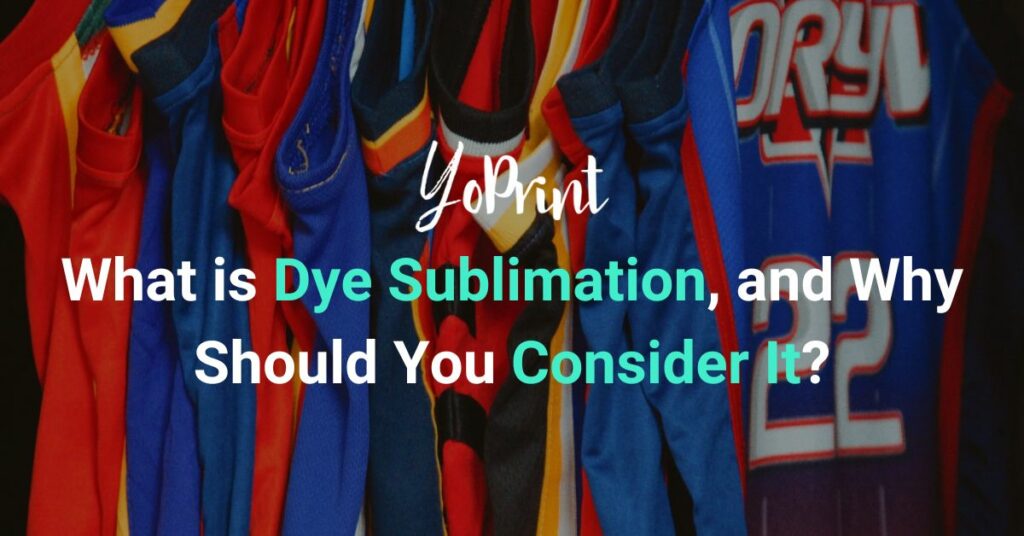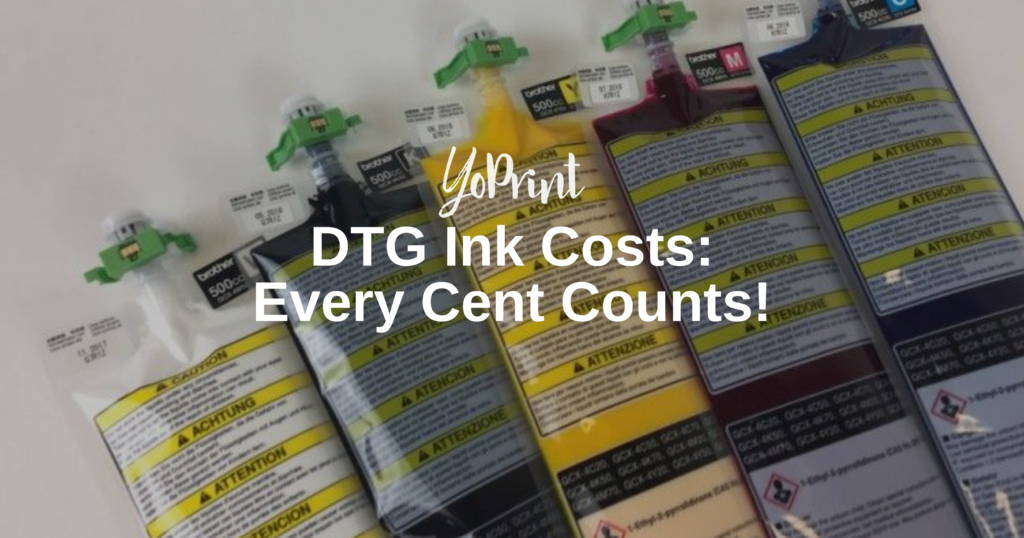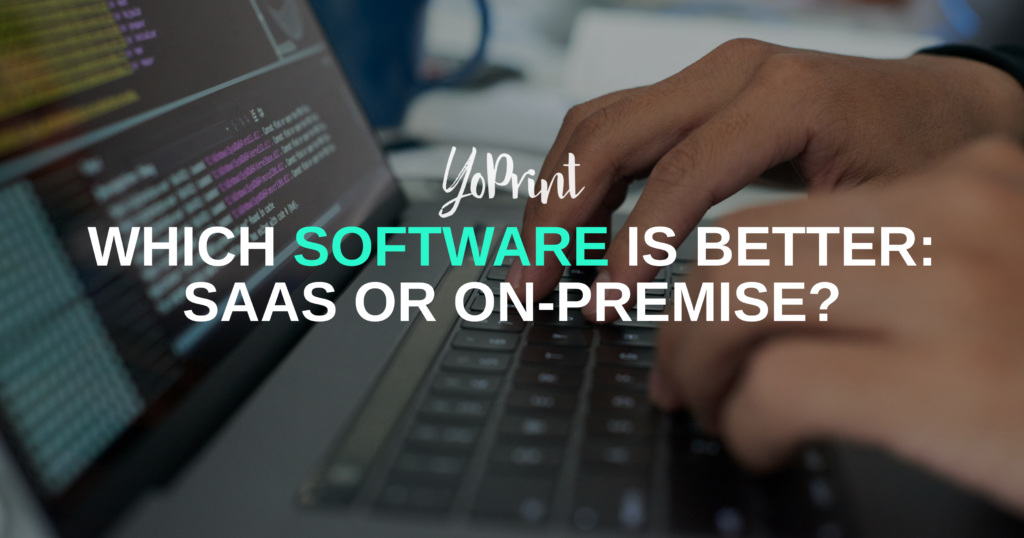With so many printing methods available, newcomers might find themselves hard-pressed to pick one that’ll work for them. Screen printing is a tried-and-true method for outputting Pantone-matching colors onto garments, perfect for logos and minimalist designs. In contrast, direct-to-garment (DTG) printing delivers beautiful, complex designs with a wide range of bright colors.
What about dye sublimation, then? Various folks have said dye sublimation printing is an excellent choice for short runs, much like DTG printing. Is it any better than either screen printing or DTG printing? Let’s take a deep dive into what dye sublimation is.
What is Dye Sublimation?

Many believe this printing method uses the science of sublimation to print designs onto a substrate. Sublimation is when a solid turns into a gas without first becoming a liquid. As such, sufficient heat from a heat press converts the special sublimation inks used for the printing process from a solid state into a gaseous one.
In the gaseous state, applying pressure with the heat press allows the inks to permeate into the surface of the substrate. It immediately returns to its original solid state and bonds with the substrate, thus creating the printed design.
Interestingly, though, that may not be the case. Some industry experts suggest it isn’t dye sublimation but rather dye diffusion. It’s the process of heating dyes to diffuse them into a substrate. But the term has gained traction since it was first introduced, so the name stuck.
Dye sublimation (or dye-sub, for short) printing is somewhat similar to heat transfer or direct-to-film (DTF) printing in that it involves transferring a design from a special transfer paper or film onto a substrate. The difference is that it doesn’t apply the design on the surface of the substrate, unlike other printing methods.
Take DTF prints, for example. Once you’ve transferred the design, run your hand over the print, and you can feel its texture. Most printing methods, including screen printing and DTG printing, apply ink onto the substrate. You can still feel a pronounced layer where the designs are printed.
With dye sublimation, try to feel around the printed area, and you won’t feel any apparent layers on the surface. The inks have essentially embedded themselves into the substrate!
What’s the Printing Process Like?
First, you’ll create the design to print on whatever substrate you pick. You can do this with any graphic design software, such as Adobe Photoshop, GIMP, or Corel Draw. When the design is ready, a raster image processor, or RIP, software helps translate the image into a set of instructions that the sublimation printer can use.
Before you start, heat press the garment for about 5 to 10 seconds; this ensures that the substrate is nice and flat, preventing the design from getting smudged or misprinted. You won’t need any pretreatment for the substrate since the inks will be sublimated into the substrate. At the same time, this also reduces the overall production time.
Sublimation printers will print out your design onto a special transfer paper. You can then position the piece over where you want the design to be printed, place a sheet of protective paper (which prevents the substrate from getting stained or damaged during printing) over it, then transfer the design with a heat press.
Under the heat press, the inks are converted from solid to gas, allowing them to be absorbed into the substrate. The substrate’s pores are “opened” due to the heat, while the pressure cools the ink and turns it back into its solid form. By the time it cools, the inks will have already permanently set into the garment.
Cut and Sew and All-Over Printing

“Cut and sew” refers to companies that use dye-sub printing to print out full body designs onto large sublimation transfer rolls, then cutting these prints out and sewing them onto the garment. This is the most common application of dye-sub printing in the garment industry, especially in making unique clothing for special events, conventions, or trade shows.
It follows the standard dye-sub printing workflow, except that the designs are not immediately applied to the garment. Also, all designs are printed on transfer rolls through large-scale wide format printing machines. Once printed, these designs are cut out from the rolls and sewn onto the chosen garment. You’ll get a completed product that has no visible creases or imperfections.
The issue of creasing is pronounced in all-over printing. All-over printing takes a garment, lays it flat on a dye-sub printer platen, then has the design applied onto the entirety of the garment, including the sleeves. You still get great-looking designs, but more often than not, you’ll find white creases in hard-to-reach areas such as the armpits and even the side seams of the garment.
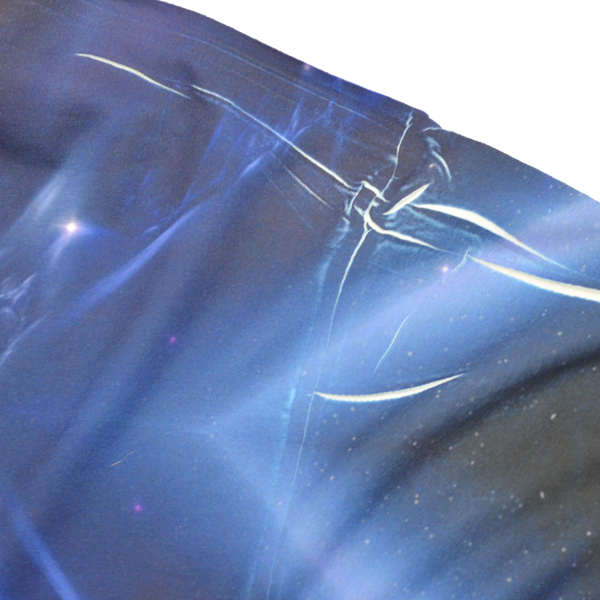
Take a look at this picture. You can see the white creases where the ink wasn’t applied correctly. This happens because the printer cannot reach these areas; no matter how you lay out the garment, there are bound to be areas where the printer simply cannot print accurately, such as the armpits. Creases can also still form when you lay down the garment for printing, most notably around the sleeves and sometimes along the sides of the garment.
In the later sections, we’ll discuss cut and sew and all-over printing in detail.
Requirements for Dye Sublimation
Getting started with dye sublimation printing requires specialized equipment for dye sublimation use. If you don’t have the right equipment, you will be unable to do any printing.
Dye Sublimation Printer
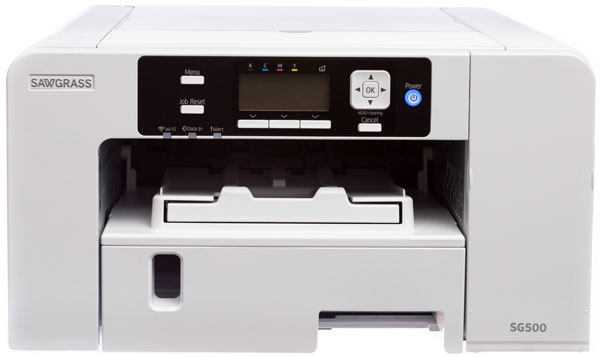
Dye-sub printers use special sublimation inks to print the designs on sublimation transfer papers. The most significant advantage of dye-sub printers is the ability to print photo-realistic, vibrant colors that last a very long time.
Much like DTG and DTF printing, you can acquire a converted printer as your first dye-sub printer. Most converted printers are based on Epson EcoTank models or inkjet printers, most likely due to their affordability and abundance. Of course, the major hurdle will be performing the conversion independently.
You can find many tutorials on YouTube, but they still have caveats. For one, if you mishandle the conversion process, you’ll void the warranty on your brand-new printer that can no longer print anything.
Outside of converted printers or doing it yourself, other dedicated dye-sub printers you can purchase include:
These printers are compact and can print out A4-sized sheets, suitable for small area prints for garments, cups, and other items. Some printers, like the SG500, may also come bundled with software for managing prints and workflows.
Large format printers such as the Texart XT-640, Epson’s SureColor F10070H Printer, or the Sublistar SUBLI-2215/2615TX are usually found in large-scale printing companies that produce multiple garments in bulk orders. These printers, naturally, cost a lot more than small-scale printers like the SureColor F570 owing to their faster printing speeds, better color vibrancy, and various other improvements.
Sublimation Inks
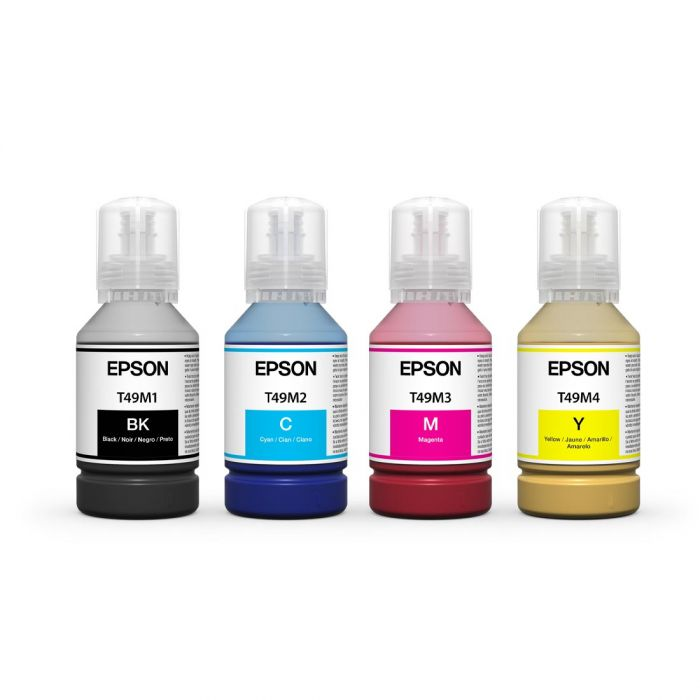
Sublimation inks are also known as “disperse dyes.” They are special water-based (aqueous) ink printed onto sublimation transfer papers. When heat and pressure are applied to the paper, it releases the inks; the inks sublimate from liquid to gas so that they are absorbed into the substrate on a molecular level. When done correctly, your prints become waterproof and resistant to wear and tear.
The inks are “heat activated” at temperatures between 370-400ºF, depending on the type of ink. Even at 340ºF, the ink may be activated, potentially causing permanent stains on your equipment. Make sure you read the storage instructions carefully when you buy your inks.
Dye sublimation is an additive color process, so printing inks on white or light-colored garments will yield the best results. This is because the color of non-white garments will “bleed” into the design, causing a drastic change in the overall color scheme and vibrancy of said design.
The important thing about these inks is that they’re odorless and environmentally friendly. Not only do you reduce the amount of water used for printing or cleaning, but you also need a minimal amount of ink to print out your designs.
The dyes used in the inks are also free of harmful chemicals, heavy metals, solvents, and other substances that could jeopardize one’s health or damage the environment. Still, having a well-ventilated printing area and sound OSH procedures will ensure you and your team are healthy and hale at work.
Sublimation Transfer Paper
You’ll use this to print your designs and then transfer them onto your substrate. It operates on similar principles to DTF transfer films. The transfer paper is made from a paper substrate with a special coating that allows the paper to hold the sublimation inks. Once you apply heat and pressure to the paper, you’ll transfer the ink onto the substrate.
Using the correct transfer paper ensures printing consistency for every design you make. You’ll need to consider factors such as the textile weight (measured in gsm) of the transfer paper so that inks are properly absorbed without causing curling or warping issues.
That’s not all, though. You can reuse your sublimation paper (in some cases, create a sort of “distressed” look), recycle them if you don’t need them, use them as packaging filler, and more!
Protection Paper
Protection paper is used during the heat press process. Its purpose is to protect the substrate from ink stains or damage during printing and/or heat pressing. Before using it, you’ll need to ensure that there aren’t any creases or imperfections on the protection paper. These creases or imperfections can also be transferred to the substrate, leading to white marks or lines due to the crease interrupting the print process.
Protection paper can also be reused after its initial application, ensuring that no consumable used goes to waste.
Heat Press

The heat press is an integral part of the printing process. You’ll need it to apply heat and pressure your designs on the transfer paper to your substrate. An inexpensive manual heat press is good enough for entry-level setups to get the job done.
For large-scale industrial printers, they use a calender heat press instead. This giant roller machine rolls the transfer paper and then applies heat and pressure to the substrate. Calender heat presses are primarily used in cut-and-sew applications, as the printed designs can be cut out and sewn onto the garments sold.
Software
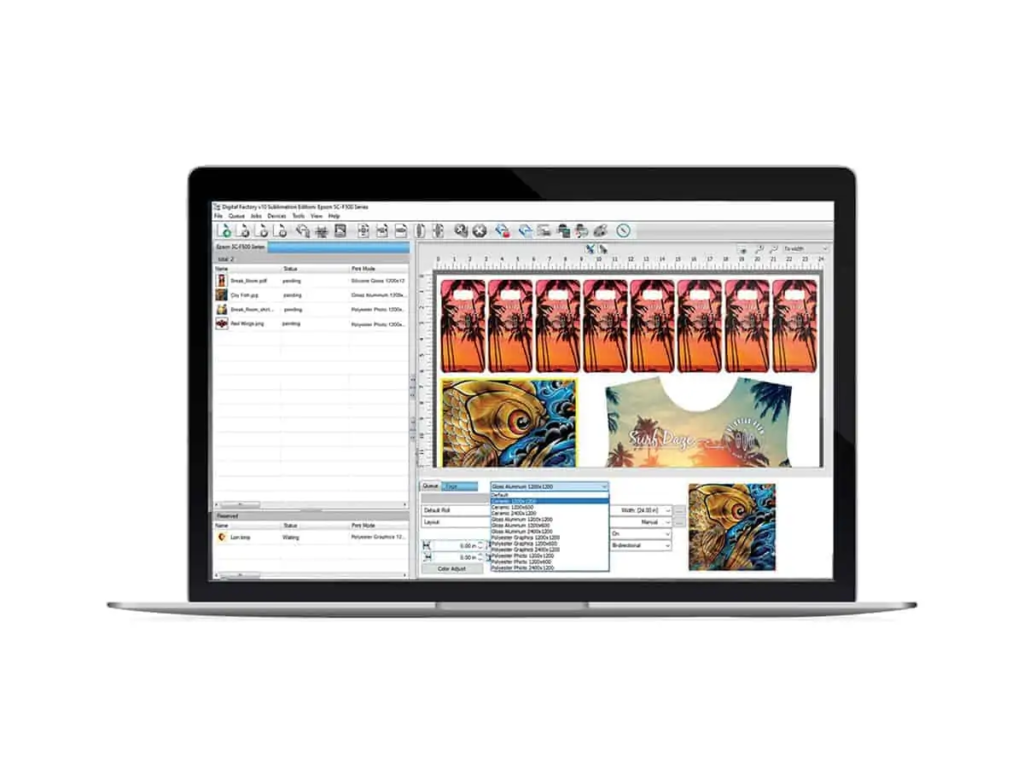
You must also rely on RIP software to ensure that the printer prints your designs correctly. The right software enables you to modify a design’s characteristics, such as its color performance, to ensure that the overall print quality is excellent from start to finish.
Ergosoft, CADLink, and Texgraff are a few examples explicitly tailored for sublimation printing. You might be able to find authorized resellers who sell this RIP software. Be mindful that certain types of RIP software may be for large format sublimation printing on textiles, so be sure to research before buying the wrong software.
Setup Costs for Dye Sublimation Printing
While its prints are attractive, dye-sub printing is one of the most expensive printing methods, owing to the specialized equipment and consumables you’ll need. Though it won’t be as costly as DTG printing, the prices increase as you look for the ideal equipment for the job.
Printer and Supporting Equipment
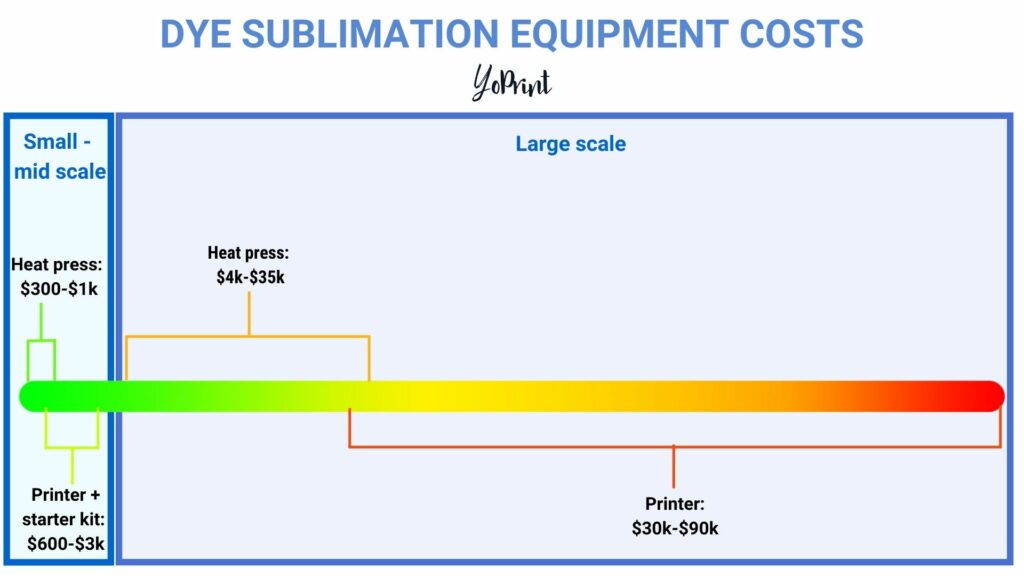
As with DTG and DTF printing, you can get entry-level equipment for a reasonable price. The Sawgrass SG500, for example, goes for about $574 (price may differ for different states/regions) for the printer, a starter 20ml ink kit, a sample pack, and 100 sheets of sublimation paper. All in all, it’s a decent price point for newcomers.
On the other hand, an Epson F570 printer may cost you at least $2,500. If you buy it directly from Epson, some goodies include a “full sets of initial ink bottles,” Epson’s proprietary Edge Print Pro software, rolls of transfer paper, and a helpful “Start Here” poster.
Large format printers are obviously more significant in size and cost due to their large-scale output. The Texart XT-640 goes for $29,995 and comes with Roland’s proprietary software and two-year warranty coverage. Meanwhile, Epson’s SureColor F10070H goes for at least $89,000.
If you’re new to the industry, you should consider a smaller sublimation printer. If you own a successful shop and plan to branch out to something new, large format printers like these are worth the investment.
Heat presses can go between $300 to $1,000 or more, depending on the press’s brand and/or quality. Again, manual presses are good if you’re starting with dye-sub printing. If you’re able to set up for large-scale dye-sub printing, a calender heat press can go anywhere from $4,000 and above, depending on the type and size of the machine.
Consumables

Much like DTG printing, you can find compatible inks to purchase for use in your sublimation printers instead of buying expensive proprietary ones. If you plan on doing that, you’ll need to be extra careful when making ink purchases. Of particular importance is to check with the seller on which printers these compatible inks work best with. Not all compatible inks play nicely with one another, so ensure you find the relevant details before buying.
For example, the Epson SureColor F570 uses the T49M CMYK sublimation inks. The only available size for these inks is 140ml bottles retailing at least $25 per bottle. That would mean you’d spend $100 on four bottles for the CMYK gamut. For compatible inks, on the other hand, you can easily purchase a complete 4-pack for only $44 or so.
Your other consumables are a little less costly to purchase. Sublimation paper sheets can go for as low as $15 for a pack of 100 sheets – but again, prices may vary depending on various factors, such as total width, quality, gsm weight per sheet, and so on. On the other hand, a 100′ roll of sublimation transfer paper can cost at least $17; longer rolls can go for at least $50 and above.
Labor Considerations

Dye-sub printing is not very time-consuming except for transferring designs to the garment. The plus point is that you won’t need to do any weeding or pretreatment of the garments. Frequent quality checks will ensure that each print is done correctly, that there are no issues with ink bleeding or white creasing, and ensure the garment’s fibers have thoroughly absorbed the inks.
You’ll still need to know how to adjust your labor costs and determine an “ideal” profit margin.
- Sales Time – without customers, your business isn’t going to thrive. You’ll need to market your company and its products to new clients while finding ways to retain regular ones.
- Accounting Time – how much time you spend settling your business accounts, be it preparing quotes or sales orders, contacting vendors, or even negotiating with customers.
- Shipping & Handling – how will you deliver your orders to your customers? What considerations should you weigh when planning for shipping orders out?
- Maintenance – do you need to clean the printers regularly? What’s the best way to keep them well-maintained without wasting your production time?
You’ll need to be realistic about your assessments of labor costs, especially if you have a team of people helping you with the day-to-day operations. You’ll need to factor in their salary and the expenses for utilities and so forth.
Getting Your Return on Investment (ROI)
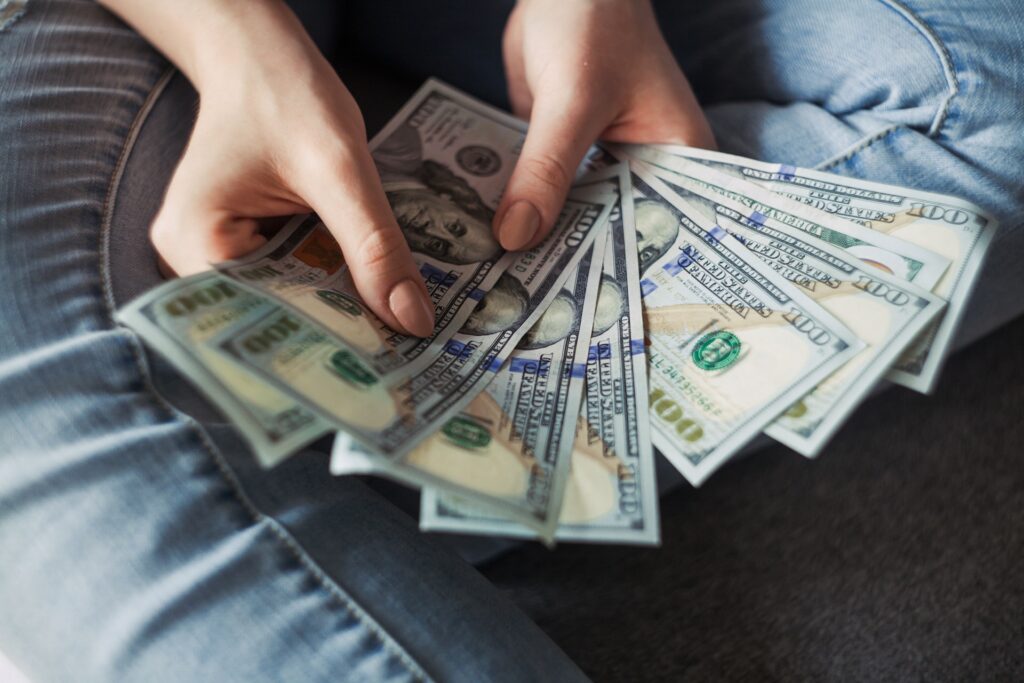
Much like DTG printing, dye-sub printing excels at handling short-run/print-on-demand orders, with between 20 to 30 shirts per order. An entry-level startup can slowly scale up from small orders, but taking on bigger orders will require more staff and equipment to handle production.
Your ROI will also depend on the printing method you pursue, be it cut and sew or all-over printing.
Let’s use a modest example. Imagine that you recently purchased a new Sawgrass SG500 (MSRP is $624 for the 31ml starter kit) per your friend’s recommendation. You now have a printer, software for your designs and color profile management, and some consumables. Other than the printer, you’ve also bought:
- A good quality heat press for $300
- Additional OEM ink cartridges at a discounted price of $60 per color (total of $240)
- Extra Image Right sublimation transfer sheets at $85 for 500 sheets
- Two 15′ x 12″ rolls of protective paper for $14
Your total comes to about $1,263 for an entry-level setup. That’s not bad, even when you factored in the cost of original Sawgrass inks! If your budget is not as restrictive, you could potentially consider an Epson SureColor F570 and compatible inks to lower your overall costs.
In that scenario, the Epson F570’s MSRP is $2,895. Assuming the other items are the exact cost, while the cost of compatible inks is $70 for a complete CMYK 140ml ink set, your total investment would reach approximately $3,364.
Do note that we haven’t factored in your blanks purchasing, lease payment, overheads, labor, consumable costs, and more.
Let’s say you picked the Epson F570 and the associated peripherals and consumables. Ideally, you want to have something similar to the following setup for a small-scale order:
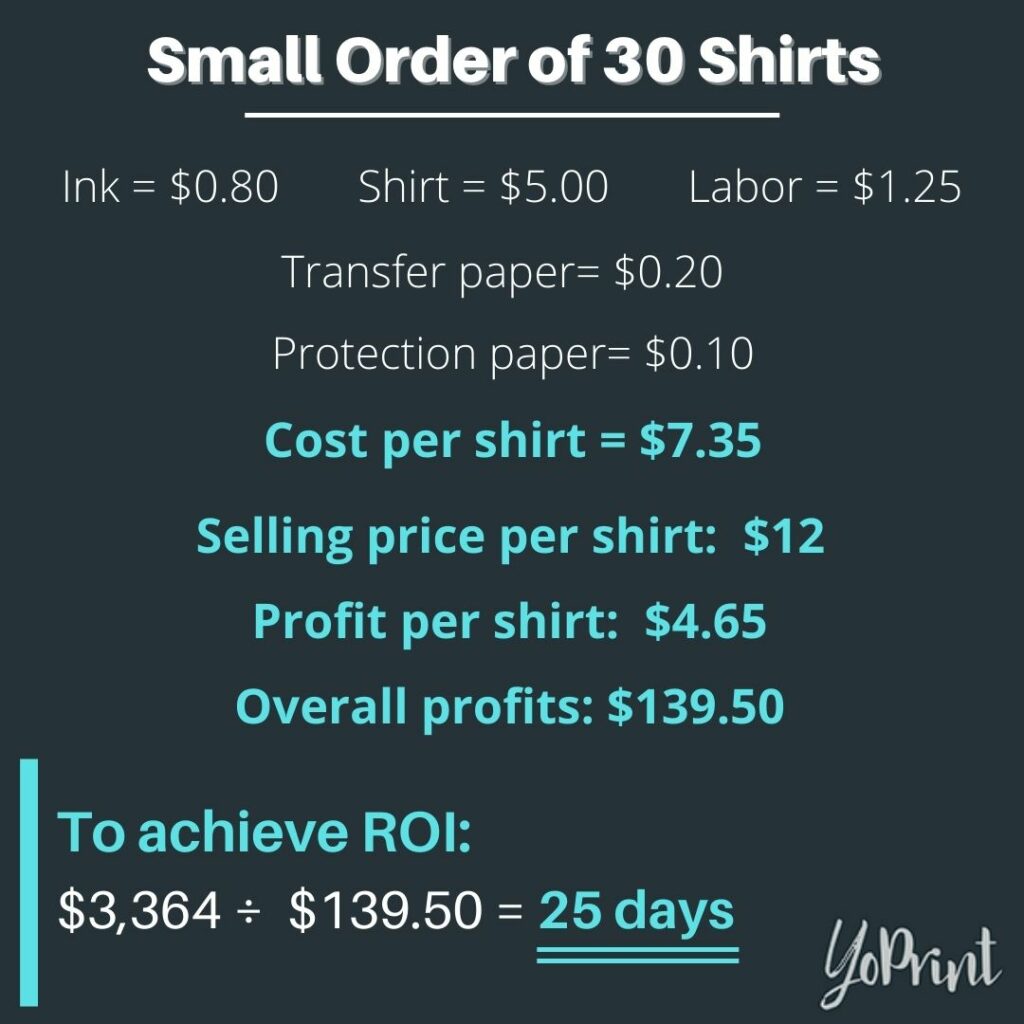
These are our estimates for small-size orders or print-on-demand sales using light-colored polyester garments. You’ll need to adjust these calculations depending on where you source your materials, equipment, and consumables.
You should know that your ink costs can adversely affect your budget. You can save on costs with compatible inks that are more affordable than proprietary/original inks but expect slightly higher ink use per print, which may mean needing to restock your inks more often than usual.
Your Business Model Can Affect Profitability
Your profits and losses depend on how you plan to run your printing business. Specifically, are you only printing small designs covering part of the shirt’s front? Are you doing all-over printing or cutting and sewing?
The easiest way for beginners would be to do small-area printing. Firstly, since you’re new, you won’t need to worry about perfecting your prints. Sure, you’ll need to get some testing done with your equipment and consumables so your prints are good quality. But at the very least, you’re only printing designs that just cover one area of the shirt instead of its entirety.

All-over printing is a step from the beginner’s method but is not entirely complicated. All you need is a printer that directly prints designs onto the entire garment while making sure the garment is appropriately adjusted and aligned in the printing area. Creases will be a constant issue you’ll have to deal with since the printer won’t be able to do a proper job in hard-to-reach areas.
Cut and sew delivers excellent results for whole body prints, but it’s more time-consuming since each printed piece needs to be cut out and then sewn onto the garment – multiple times over and over for each new garment.
More importantly, cut and sew is done for large-scale businesses and isn’t ideal for small-scale ones. You’ll need a large team to run a successful cut and sew operation, and your production times will depend on how fast each garment can be printed, cut, and sewn.
If you’d much rather handle customer service and sales only, print-on-demand (PoD for short) is another option. PoD providers offer an online-driven platform to sell your garments, customize them to meet your customer’s desires, and then sell them to a keen audience. You don’t need to have a physical storefront or meet customers face to face. All you need to focus on is your business growth.
However, PoD services are pretty pricey as they do most of the “grunt work” for you, such as printing and shipping. Customization options can also affect your pricing. As such, your prices will also need to account for all these additional costs.
Pros and Cons of Dye Sublimation
It pays to be more informed on what you can and can’t do with dye-sub printing, and this section will cover all those points thoroughly.
Entry Costs

Starting small is not as cost-prohibitive as DTG printing, so you’ll be able to have more in your budget once you’ve bought the necessary equipment and materials. The Sawgrass SG500 and the Epson F170 are excellent for newcomers as they’re affordable printers that produce good quality prints. The learning curve isn’t too steep, either, especially when there are countless tutorial videos on YouTube that you can use for reference.
You can also find mid-range printers such as the Sawgrass VJ628, retailing for about $4,500, and a starter supply kit. This would elevate your total expenditure, but if you’re keen to learn the ropes, there’s no stopping you from buying a mid-range printer and working with that.
Larger-scale printing will require a more considerable investment to get it going entirely. As such, you can potentially increase your profit margin with the right business choices down the road. However, due to the specialty, specialized nature of dye-sub printing, costs inevitably will rise.
The cost issue becomes more apparent when you need to change certain aspects of your printing operations, whether upgrading equipment or using higher quality but more expensive consumables to deliver excellent customer results.
Output

If you’re printing smaller prints that don’t cover the entire garment, your process is very similar to DTF and other forms of heat transfer printing. As long as you have an optimal arrangement for printing and pressing designs, you could easily hit a reasonable production rate in a day – probably between 20 to 50 shirts.
Meanwhile, cut and sew applications of dye-sub will take longer to complete than all-over printing, owing to the necessity of cutting and sewing printed pieces to the garments. All-over printing requires you to place the garments into the printer, and the machine will take care of everything.
Of course, consistency is the advantage cut and sew has over all-over printing. All-over printing, as mentioned earlier, has a higher likelihood of developing white creases due to how the garment is placed in the printer. No matter how you arrange the garment, it’s unlikely that you’ll prevent wrinkles from happening in hard-to-reach areas.
Suppose you’re only printing designs covering a small garment area. In that case, you probably only need 6 to 8 minutes to prepare a dye-sub printed garment since it’s much like conventional heat transfer or DTF printing. Not having to pretreat garments or go through a lengthy setup process does help you put out more shirts in a short time, especially if you have an ideal printing setup and have a small team to help you out.
Both all-over printing and cut and sew are more time-consuming, especially in the latter’s case. All-over printing only requires you to place the shirt carefully in the printer so the designs can be printed on the entire garment. Cut and sew prints the designs separately, so they must be cut out and sewn onto the garment.
Besides checking the quality of your prints, you also need to ensure that each garment is heat-pressed correctly to get the best results. If you don’t do that, you might end up with poorly printed garments with color runs, ink bleeding, and other problems that’ll cost you if you’re careless.
Print Quality and Durability
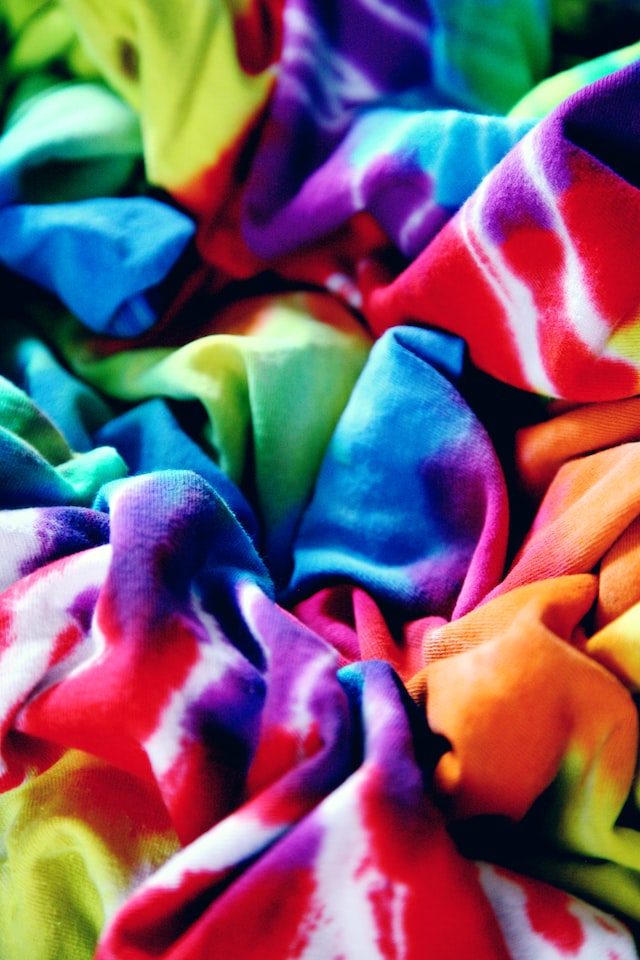
Move over, DTG: if you want some of the best overall print quality, dye-sub printing surpasses DTG printing. For one, dye-sub printing has the inks absorbed directly into the fabric of the garment, while DTG printing only prints the inks onto the garment’s surface. The latter is why you can still feel the print, though it’s pretty soft compared to other methods like screen printing or DTF printing.
In dye-sub’s case, the inks go directly into the substrate so that you won’t feel anything of the print except the garment itself. As such, you’ll also get outstanding comfort, durability, and washability since the inks don’t sit on the surface and make you feel like there’s something on the shirt. The inks won’t crack or get stretched out at all.
The prints also don’t fade very quickly, though exposure to sunlight for prolonged periods will eventually cause fading over time. This is similar to other printing methods, but fading doesn’t readily occur from multiple washes. Again, it’s thanks to the ink sitting in the garment’s fibers, becoming a permanent part of the fabric.
Lastly, because the inks don’t obstruct the garment’s fibers at the surface, the garments retain their breathability and moisture-wicking properties. There won’t be any dye buildup, nor will it ever feel dense. Dye-sub printing is the best option for polyester activewear without sacrificing its primary benefits.
Colors
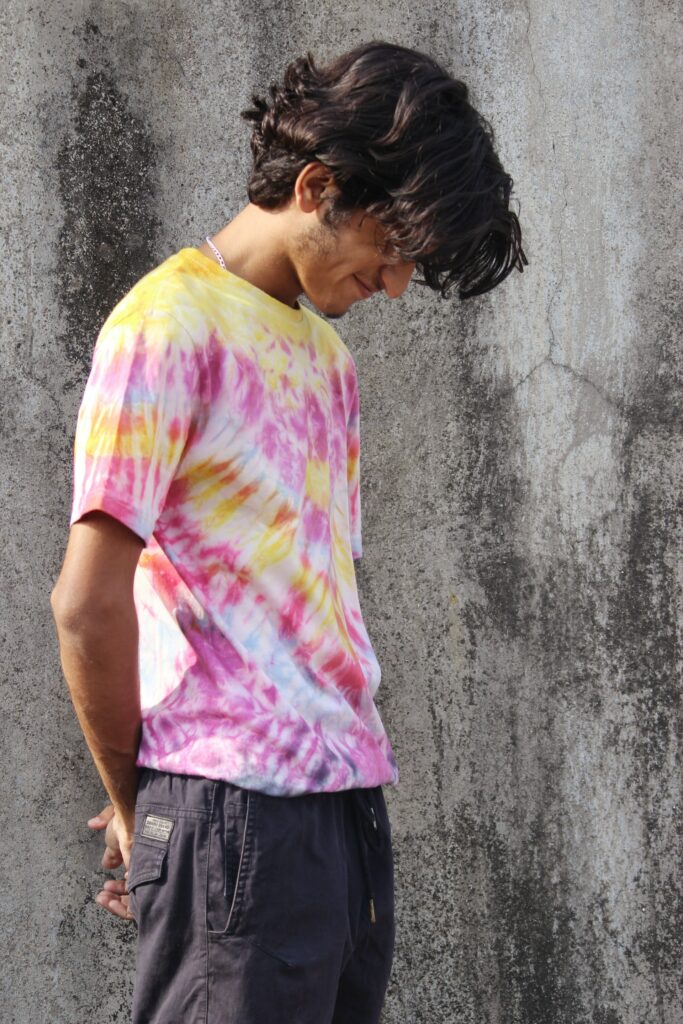
Many dye-sub printers say the sky’s the limit for dye-sub printing. It sure feels that way, considering the quality you get with the color vibrancy of the CMYK sublimation inks. The only limit is your imagination, whether standard or specialty fluorescent inks.
Traditional print methods tend to create colors by using dots, or pixels, where colored and black dots are placed next to each other to produce a specific color. Four pixels, each corresponding to the CMYK gamut, are needed to replicate various colors. The disadvantage is that white spaces between the dots can affect the design’s overall quality.
One significant benefit of dye-sub printing is the ability to print continuous color tones. Dye-sub printers apply different amounts of individual CMYK inks on top of each other to create the desired color. Color gradations will be formed around the pixels’ edge, creating a more natural look to the print.
Because of this feature, you can even print photographic images onto the garment. It’ll retain whatever finer details are in the image – color changes, excellent blends, vibrant hues, and much more. If you’ve ever seen prints made by sublimation photo printers, that’s the kind of top-tier quality that you’ll be getting.
However, as the garment absorbs the inks, there can be issues with color saturation and possible color migration. On top of why you should only use white or light-colored clothes, these issues can cause a design to look entirely different after printing: colors run or are mismatched from the intended output, ink bleeding, and so on.
CMYK inks also have difficulty matching Pantone colors that your customers might need for the design. Using a Pantone bridge can somewhat help mitigate this issue, giving your customers a choice of similar colors that would work for the design. Experimenting with your inks and ICC profiles can help you develop solutions and ensure your designs are printed per your customer’s wishes.
Customization
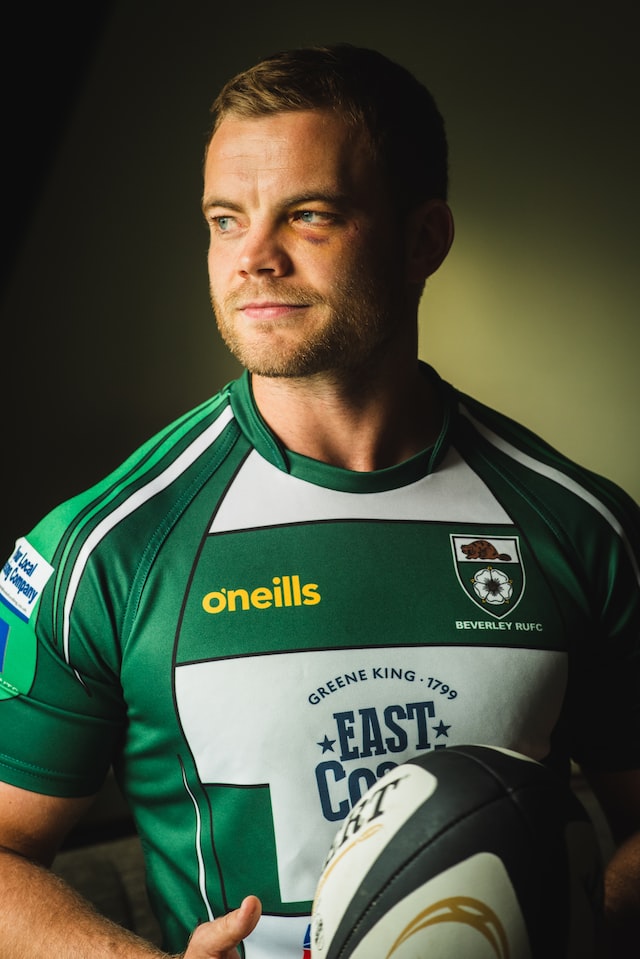
Dye-sub printing has many avenues for customization, mainly if you use print-on-demand (PoD) services to sell your wares. With the growing appeal for custom merchandise, be they garments, phone cases, or more, you’ll be able to offer a good deal of options for a wide range of customers.
Customers can submit their designs or choose from a preset library of graphics and other add-ons that you offer. You also don’t need to limit yourself to printing on garments: why not have other offerings such as phone cases, mugs, or water tumblers?
Even if you’re not using a PoD provider’s services, you can buy the right equipment for printing non-garment items for a decent amount and then price your products accordingly. You’ll be able to directly contact your customers and discuss what they need in their custom orders.
Versatility
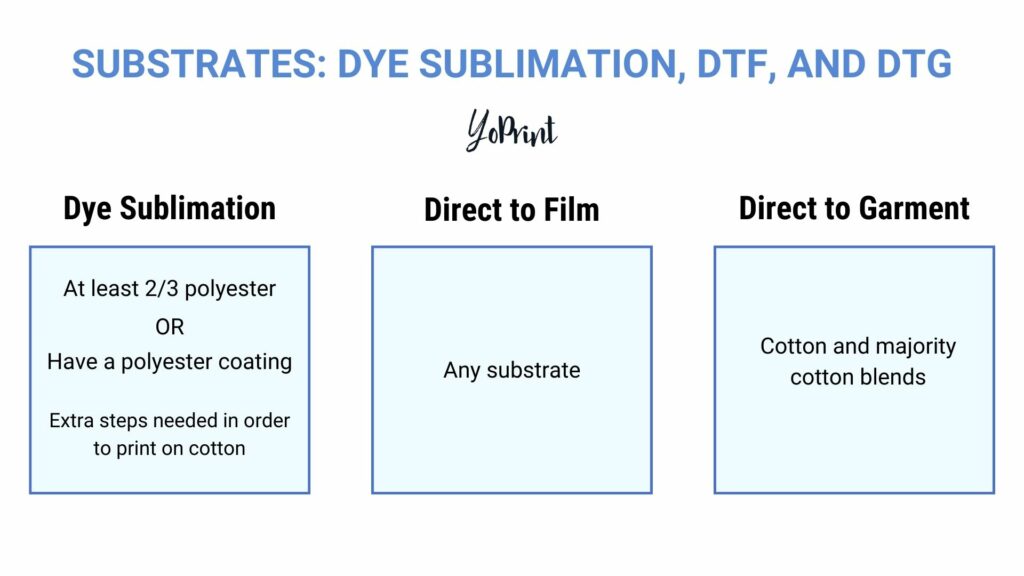
Alas, dye-sub printing’s main weakness is in its less-than-amazing versatility. Sure, you can use it to make mugs, keychains, and more designs, but there’s a catch: whatever you plan to print on must either be at least 2/3 polyester (garments, textiles) or have a polymer/polyester coating (mugs, metals, etc.).
Why exactly is this a problem? In the case of garments, it’s mainly because natural fibers like cotton are porous. DTG printing works fine with cotton because it only prints the inks onto the garment’s surface. In the case of dye sublimation, the inks are sublimated from solid to gas to permeate the garment’s fibers.
For polyester, this isn’t a problem. When you’re sublimating the inks, the heat also causes the synthetic fibers in polyester to “open” up, allowing the gas to slip into the fibers. When the garment cools, the inks become solid again while the polyester fibers “close.” Thus, the inks and the fabric become chemically bonded at a molecular level.
If you print on cotton, it’ll still look good since cotton has naturally absorbent properties. However, once you put it in the wash, the inks will only get washed out because it’s not chemically bound to the fibers of the cotton garment. This happens as the inks are only bonded to the surface of the cotton garment; since the inks are water-based, they wash off very quickly.
As for non-garment items, similar principles apply: the inks need a polymer/polyester coating on the chosen substrate to allow them to be permanently bonded to the mug. Without this coating, the inks can simply be washed off very easily with water.
Technological advances have made it possible to sublimate onto cotton garments. Still, you’ll need specific items (such as sublimation fabric sheets or special spray coats) or different printing methods to allow the inks to absorb the garment’s fibers adequately.
Consistency
Dye-sub printing can deliver very consistent results from start to finish. Since it requires a lot of precision and manual labor, a streamlined process can ensure that every print run yields garments with detailed designs, great color tones, and not a single issue with the print.
Maintaining that consistency can be difficult. Minor changes or mistakes to any part of the printing process can negatively affect your production. Without frequent quality control checks, you could end up wasting a lot of time, effort, and money on a few (or a lot of) poorly printed products.
Dye-sub printing is not very forgiving, either. In all-over printing, you must align the garment carefully to the designated print area, or else the design could be misprinted. You’ll need to be careful with setting up your color profiles and know how the printing process can affect the output of colors, or you’ll end up with poor color matching, low vibrancy, or even both.
Let’s take a simple example: using creased protective paper. Sometimes, the protective paper might have tiny creases or dents that you may have missed. After a heat press, you might then find tiny white creases on the garment where the protective paper had those creases.
Eliminating these issues requires you and your team to be diligent when examining the printers and all the outputs at all times, thus ensuring your consistent quality from start to finish is assured.
Maintenance
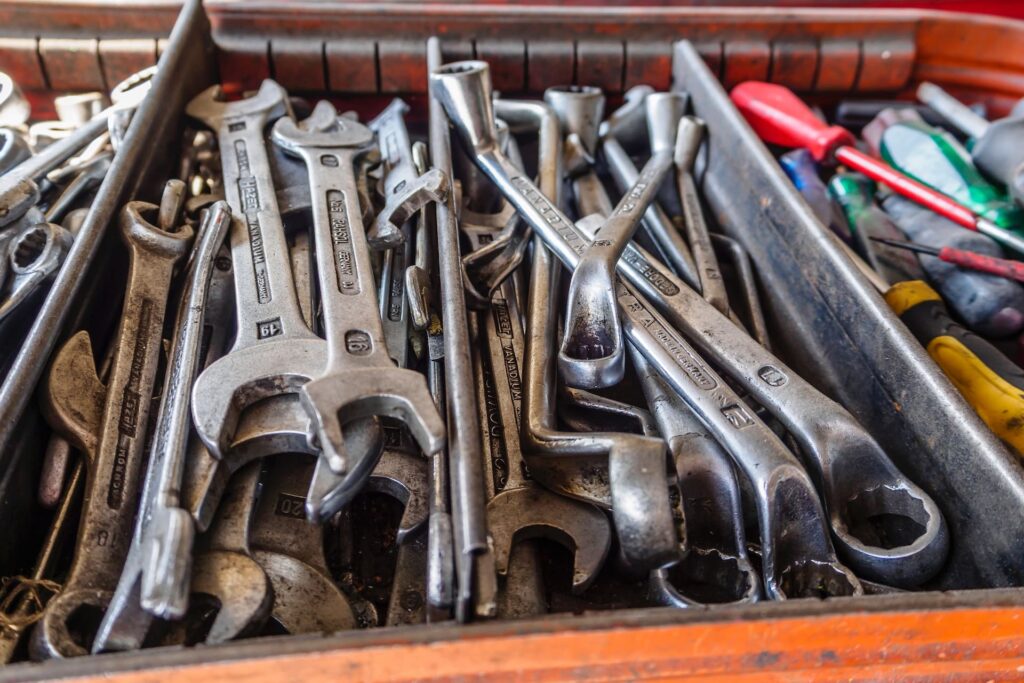
Looking after your dye-sub equipment requires you to be diligent and meticulous from start to finish. Of paramount importance is to keep your printers well-maintained at all times. Always read the manufacturer-provided manual to know what needs to be done to keep the printer working optimally.
Regular maintenance is crucial to ensure every garment has a good print and the printers are in functional order. Setting aside five minutes of your time for routine maintenance will be very beneficial to keeping your machines running optimally for much longer.
Because dye-sub printers and sublimation inks are highly sensitive, you need to perform maintenance in the right conditions, preferably in a well-ventilated area with low humidity levels. Dust, dirt, and other particulate matter can also get into your equipment and consumables. In the case of your inks, any foreign matter that gets into the ink cartridge can affect your print quality and cause severe damage to the ink-delivery system.
If an issue occurs that you can’t resolve on your own, be sure to contact technical support for further assistance. Attempting to fix the problem yourself could end up causing more damage and ramp up your maintenance costs and will eat into your overall production time and profit margins.
Is Dye Sublimation for You?
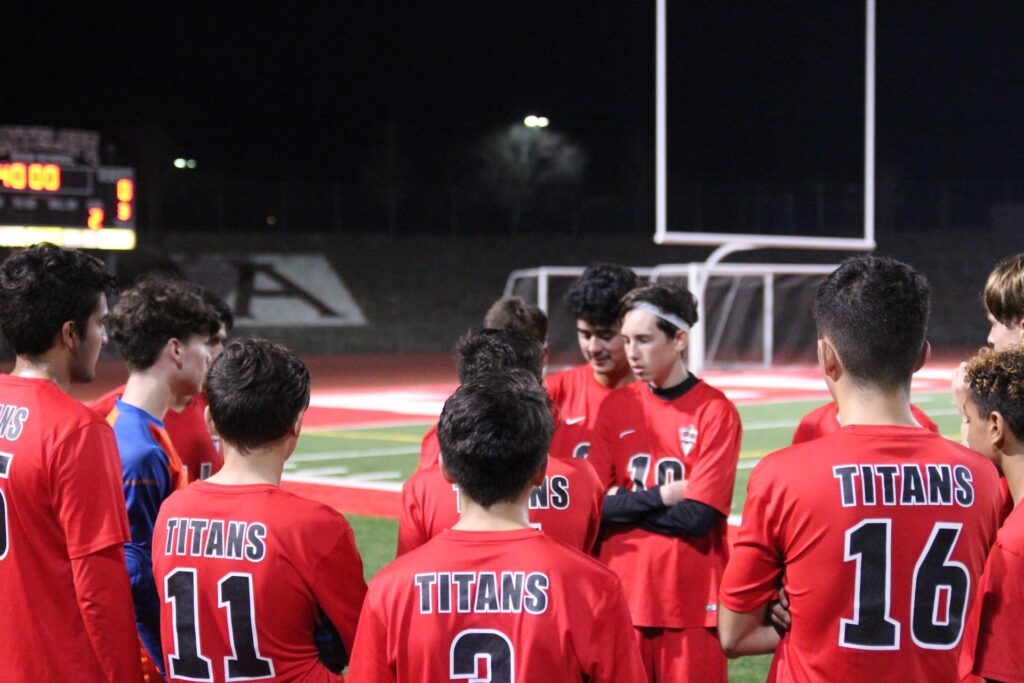
Dye-sub printing allows you to make custom products using polyesters or polymer-coated items, making it perfect for activewear and synthetic garments. It’s also good to start printing custom shirts and products in small runs, offering excellent design quality and vivid colors that help accentuate the garment’s appearance.
With various entry-level printers, it’s become much more affordable for anyone to start printing good quality dye-sub garments. You’re not limited to just printing on shirts; you’ll need blanks made of polyester or polymer-coated.
Scaling could also complicate your overall business model. Because of how specialized dye-sub printing is, higher quality printers and other equipment and consumables go up in price. You may be looking at at least $30,000 (or more) to get all the necessary, high-end equipment for bulk printing.
Moreover, this also means having to dedicate more resources to labor. Since dye-sub printing is quite a labor-intensive method, you’ll need dedicated staff to handle the crucial stages of the printing workflow: from mounting the garments onto the printers to adjusting the sublimation transfer rolls that the printers use.
What about DTF printing? We’ve said that dye-sub printing is identical to it a few times. You might find DTF printing an ideal choice for quick and simple designs that you can transfer to a wider variety of substrates, including ceramic mugs and even glass and metal. Additionally, DTF printing isn’t restricted to specific types of substrates or requires specific coatings to be applied to certain substrates. You don’t even need a large team to put out products quickly.
However, suppose you’re only interested in leveraging polyester garments or polymer/polyester-coated substrates and have a good team helping you. In that case, dye-sub printing still makes for a good choice. It can be hard to resist having the ability to make photographic-quality prints that stand out in terms of color vibrancy and unrivaled durability.
Additional research can help you learn everything that needs to be known, allowing you to create better products and ensure your shop and equipment work optimally.
You could also have dye-sub printing as a counterpart to DTG printing if you’re already doing the latter. This is a good combination, as DTG printing can’t reliably print on polyester (or similar synthetic) garments. In contrast, dye-sub printing is unsuitable for printing on natural fibers like cotton. As such, you can now offer dye-sub or DTG printing options for customers needing their designs on different substrates.
While it does have its fair share of cons, leveraging dye-sub printing to your advantage can allow you to go much farther with exciting results for you and your growing customer base. The ability to produce photographic-quality prints at reasonable prices, and the excellent customization options beyond just garments and textiles, can be what you need to stay ahead of the curve and take your business to new heights.
